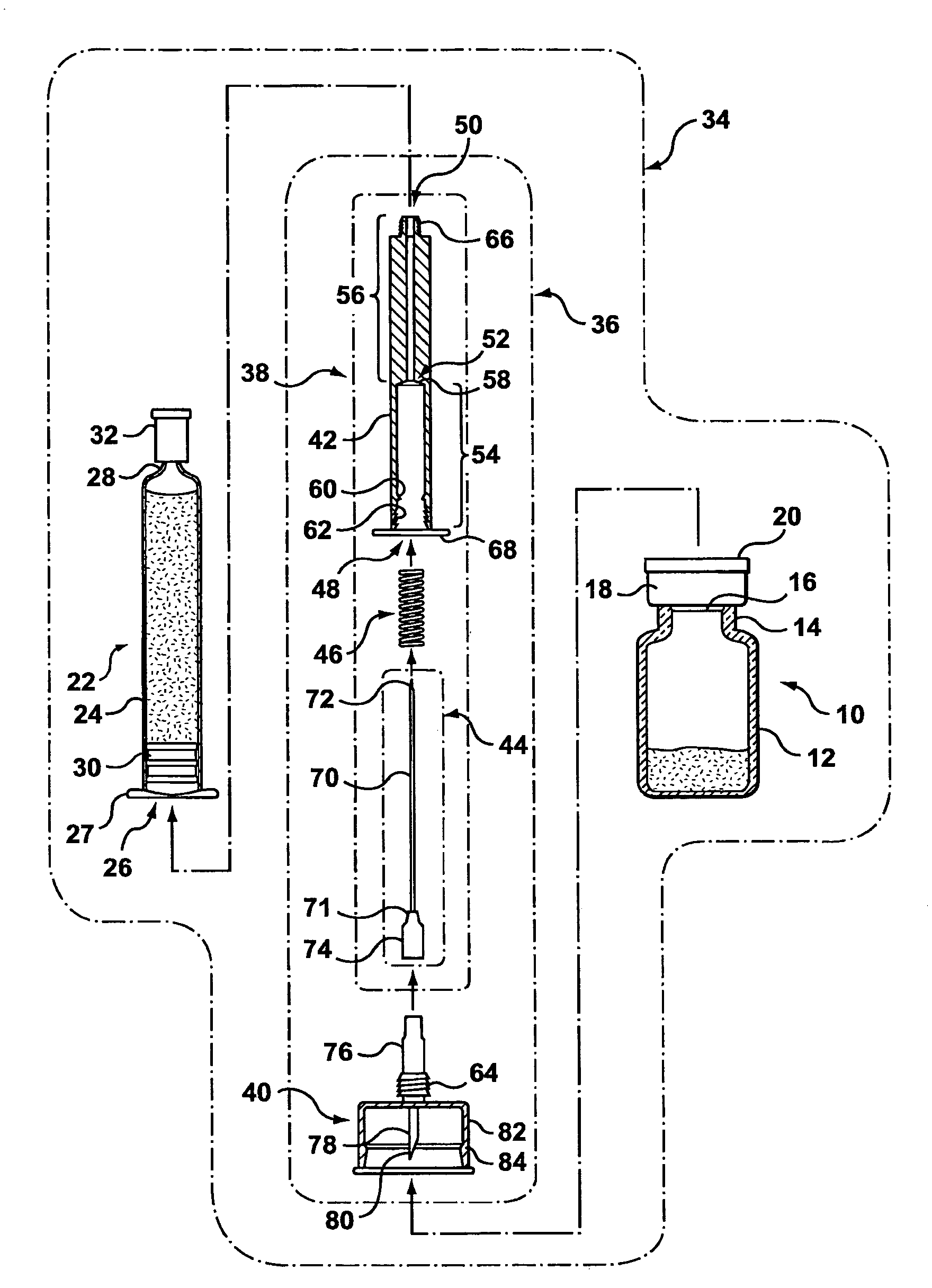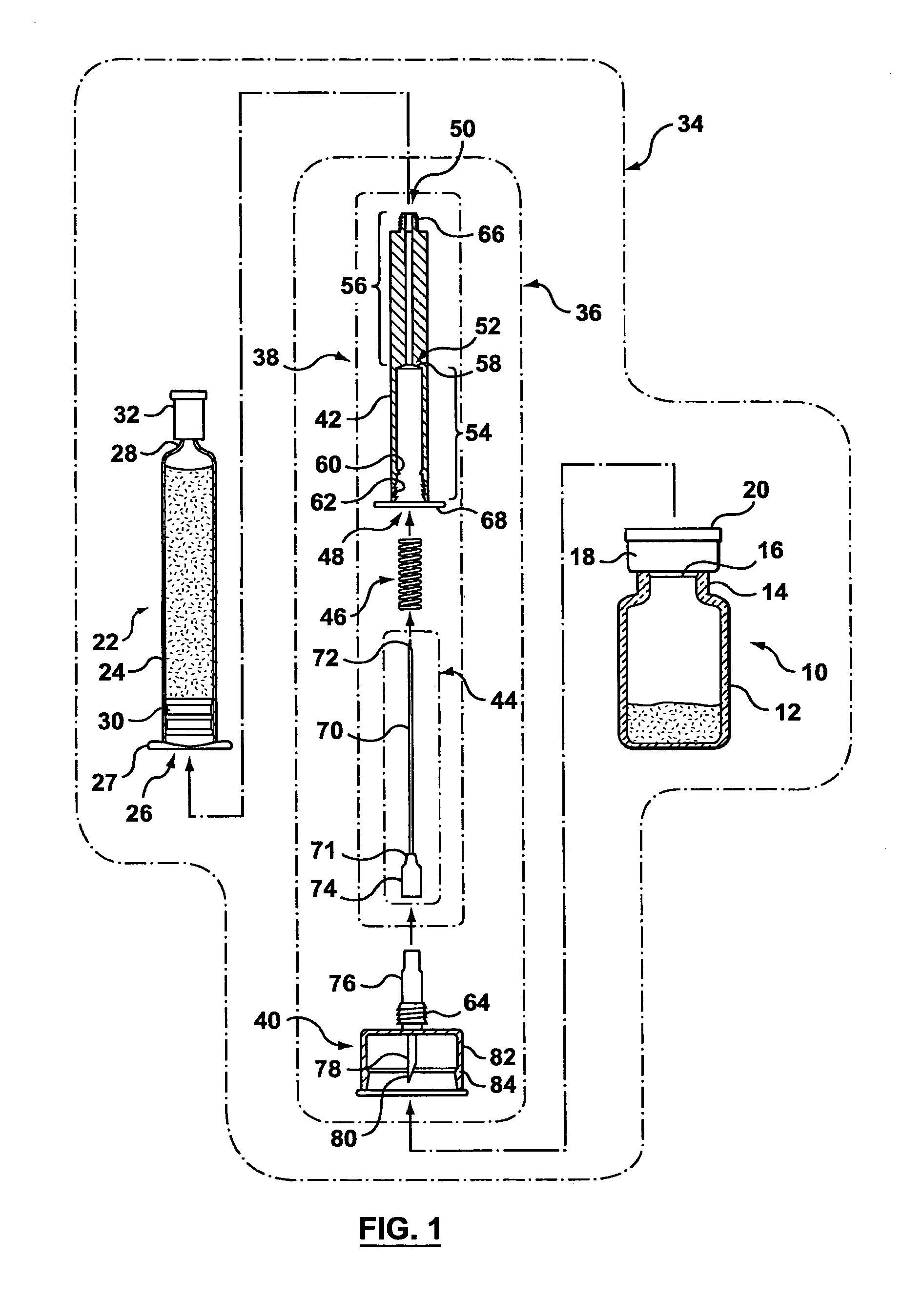Fluid transfer assembly for pharmaceutical delivery system and method for using same
a technology of fluid transfer and pharmaceutical delivery system, which is applied in the field of fluid transfer assembly for pharmaceutical delivery system, can solve the problems of accidental pricking, affecting the sterility of the needle, and particularly dangerous accidents, and achieves the effect of reducing the possibility of accidental pricking and sufficient length
- Summary
- Abstract
- Description
- Claims
- Application Information
AI Technical Summary
Benefits of technology
Problems solved by technology
Method used
Image
Examples
Embodiment Construction
[0080]The pharmaceutical transfer assemblies described herein may be used with a standard pharmaceutical vial and a standard syringe or slightly modified versions thereof. However, some other embodiments of the transfer assembles may use a special form of vial, which falls within a class of vials called maximum recovery vials. Such other embodiments are shown and described in relation to FIGS. 54 to 58.
[0081]As best seen in FIG. 1, a standard pharmaceutical vial 10 generally has a vial body 12, a neck 14 of a reduced diameter compared with the body 12, a penetrable closure 16 made of an elastomeric material (e.g. rubber), a cap 18 to hold the penetrable closure 16 onto the pharmaceutical vial 10, and a cover 20 to protect the integrity of the penetrable closure 16 before use.
[0082]Still referring to FIG. 1, a standard syringe 22 may be a glass syringe having a syringe body 24 being open at one end 26 and having a neck 28 at the opposite end. A piston 30 is lodged in the syringe body...
PUM
 Login to View More
Login to View More Abstract
Description
Claims
Application Information
 Login to View More
Login to View More - R&D
- Intellectual Property
- Life Sciences
- Materials
- Tech Scout
- Unparalleled Data Quality
- Higher Quality Content
- 60% Fewer Hallucinations
Browse by: Latest US Patents, China's latest patents, Technical Efficacy Thesaurus, Application Domain, Technology Topic, Popular Technical Reports.
© 2025 PatSnap. All rights reserved.Legal|Privacy policy|Modern Slavery Act Transparency Statement|Sitemap|About US| Contact US: help@patsnap.com



